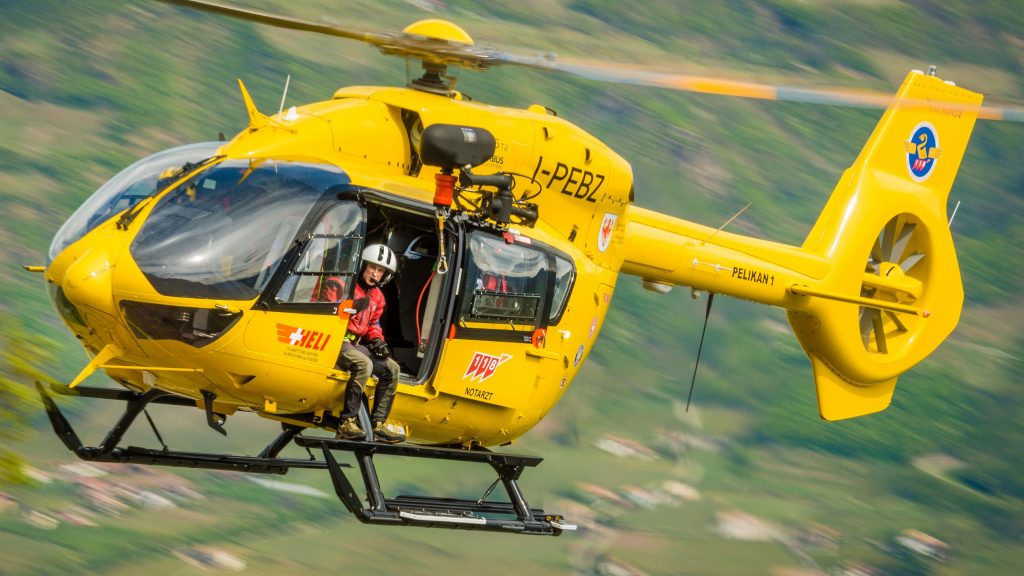
Helicopter rescue, Europe's proposal for new requirements: HEMS operations according to EASA
EU Member States are considering the document issued by EASA in September concerning HEMS operations and helicopter rescue in general
HEMS operations, new requirements proposed by EASA
In September, EASA issued its Opinion Number 08/2022, a 33-page document that individual European states are evaluating.
It is expected to be voted on in early 2023, the rules would come into force in 2024 and individual states would have three to five years to comply by transposing the new provisions.
It would renew the rules for the operation of helicopter emergency medical services (HEMS) in Europe.
The 33-page focus is all about risky flights, those in sub-optimal conditions.
THE BEST EQUIPMENT FOR HEMS OPERATIONS? VISIT THE NORTHWALL BOOTH AT EMERGENCY EXPO
According to EASA, the proposed regulations cover HEMS flights serving hospitals with outdated infrastructure, flights at high altitude and in the mountains, rescue operations and flights to sites where visibility may be poor.
Hospitals, specifically, will be required to adapt their facilities to make landing with acceptable degrees of risk.
Today, a flight to a conventional hospital that does not comply with heliport requirements is permitted.
The proposed new rules for flights to older hospitals require facilities to ensure that there is no excessive deterioration of the obstacle environment.
Helicopters flying to older hospitals will also have to be equipped with a night vision system (NVIS) for enhanced situational awareness at night.
For operators already using NVIS, the regulations will help to upgrade their night vision goggles.
The document defines NVIS, when used correctly by a properly trained crew, as a great help in maintaining situational awareness and managing risks during night operations.
According to EASA, HEMS without NVIS should be limited to pre-flight operational sites and well-lit urban areas
Other proposed new requirements for helicopters operating to traditional hospitals include moving maps to improve terrain and obstacle awareness, aircraft tracking coordinated with ground personnel, more thorough pre-flight risk assessments, and increased pilot training for night operations.
Single-pilot HEMS flights to traditional hospitals will be subject to additional rules, including the requirement to be equipped with an autopilot system for night flights.
In addition, there are new requirements for crew configuration that require a technical crew member to be seated in front of the pilot if a stretcher is loaded onto the helicopter.
THERMAL IMAGING CAMERAS: VISIT THE HIKMICRO BOOTH AT EMERGENCY EXPO
“If the installation of a stretcher prevents the technical crew member from occupying the front seat, HEMS service will no longer be possible,” the opinion states.
“This option has been used to keep legacy helicopters in service, but is no longer considered compatible with the desired safety standards.”
EASA noted that newer hospital landing sites opened after 28 October 2014 already have a robust helicopter infrastructure and are not covered by the updated rules.
HEMS operations at high altitude, the issues touched upon in the EASA opinion
Another HEMS flight area affected by the regulatory updates is high-altitude and mountain operations.
Performance and oxygen regulations for HEMS [for example] currently do not work at high altitude and need to be corrected.
More stringent flight, operator and patient safety regulations, therefore, in the EASA document.
EASA HEMS opinion_no_08-2022Read Also:
Emergency Live Even More…Live: Download The New Free App Of Your Newspaper For IOS And Android
HEMS / Helicopter Operations Training Today Is A Combination Of Real And Virtual
When Rescue Comes From Above: What Is The Difference Between HEMS And MEDEVAC?
MEDEVAC With Italian Army Helicopters
HEMS In Russia, National Air Ambulance Service Adopts Ansat
Helicopter Rescue And Emergency: The EASA Vade Mecum For Safely Managing A Helicopter Mission
HEMS And MEDEVAC: Anatomic Effects Of Flight
Virtual Reality In The Treatment Of Anxiety: A Pilot Study
US EMS Rescuers To Be Assisted By Paediatricians Through Virtual Reality (VR)


